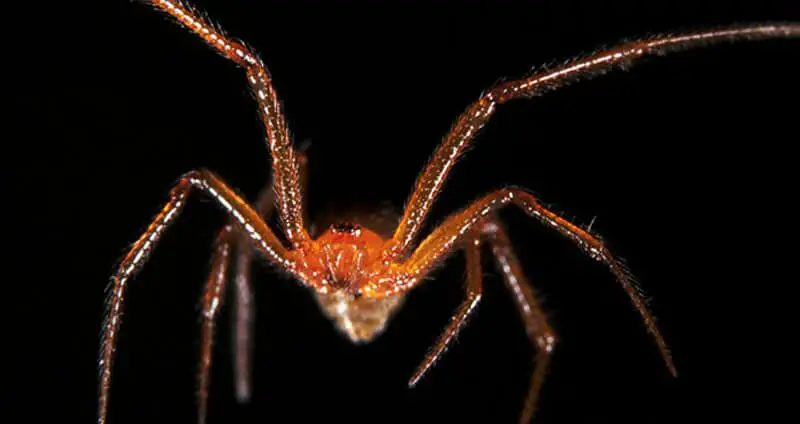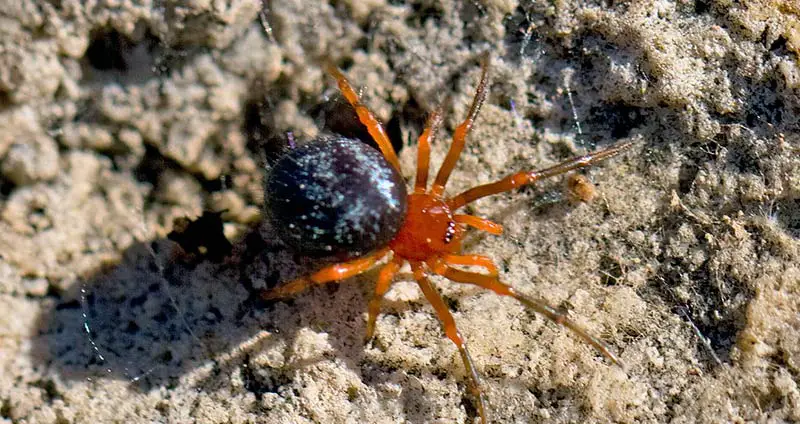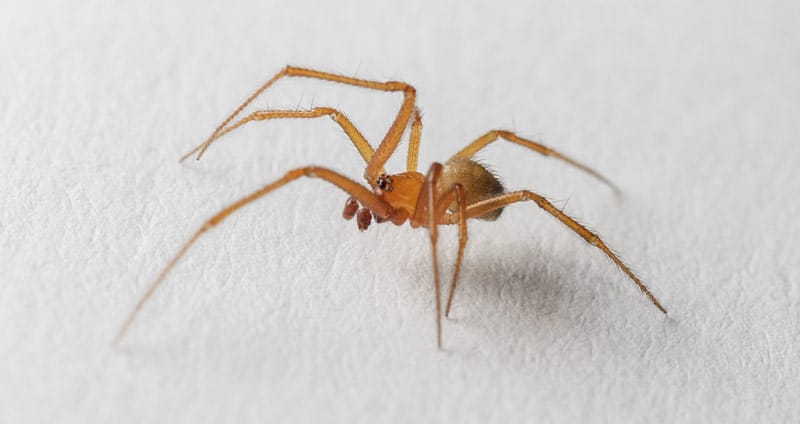A very common house spider, the Red House Spider, or Nesticodes rufipes, is the only member of the genus Nesticodes.
It’s a spider that’s small in size but relatively easy to identify and easy to find if you look for them.
Despite their somewhat intimidating coloration, these spiders aren’t very dangerous, but they should still be avoided.
Table of Contents
At A Glance
| Scientific Name | Nesticodes rufipes |
| Distribution | Worldwide, but largely California, Texas, Florida and Australia |
| Habitat | Inside in dark corners and around outdoor gardens |
| Size | 1/5″ to 1/3″ |
| Bite | Painful but non-necrotic |
| Lifespan | Unknown |
Red House Spider Appearance
This is a very small spider species, with a body length of only 1/5″ to 1/3″ for adult females and slightly smaller for males.
Staying true to its name, the Red House Spider has reddish-brown coloration over its entire body and legs.
Their abdomen is more or less round and darker than the rest of their body but is overall quite simple.
Females do possess a red band and hourglass-like marking on the underside of their abdomen, though.
This physical trait results in people confusing this spider for a black widow.

Red House Spider Habitat
This species of spider has spread all throughout the world, but it’s most common in California, Texas, Florida and Australia.
While it is present worldwide, the Red House Spider has a preference for warmer climates. Despite this preference, it’s often found in cooler places within homes or in shaded areas outdoors.
Nesticodes rufipes builds messy, tangled webs that have many different anchor points for security. Inside, these webs can be found in closets, cupboards, windows, door frames, and other similar spaces.
Outdoors, it’s common to find these spiders hiding under the lips of plant pots, in sheds, or in the cracks and crevices of various other locations.
Once it’s constructed its web, it simply waits for prey to enter it. Common prey for the Red House Spider includes ants, flies, beetles, and other small critters.

Red House Spider Bite & Venom
A bite from this spider is painful, so it’s recommended that you stay away from it and be careful if disposing of it.
While the venom from a Red House Spider isn’t necrotic like a Brown Recluse, it has the ability to cause local pain and swelling for a few hours.
Fortunately, this spider isn’t aggressive towards humans, so as long as you don’t disturb one of them you shouldn’t run the risk of being bitten.
If you see one of these spiders in your house, you would be fine with just leaving it alone to feed on other bugs. However, if you want to remove it, you can do so with gloved hands or a vacuum cleaner.

Red House Spider Eggs & Spiderlings
This species mates and reproduces year-round, so it’s likely that you’ll find an egg sac nearby if you find a female and her web.
The egg sacs themselves are quite densely-packed and round — similar in size to the abdomen of an adult female specimen.
There are several dozen eggs contained within each egg sac, so eliminating them from your home is the best way to curb an infestation.
Random Red House Spider Facts
- Females keep their egg sac near the web, but not directly on it.
- These spiders are often confused with Black Widows due to their similar appearance and hiding places.

